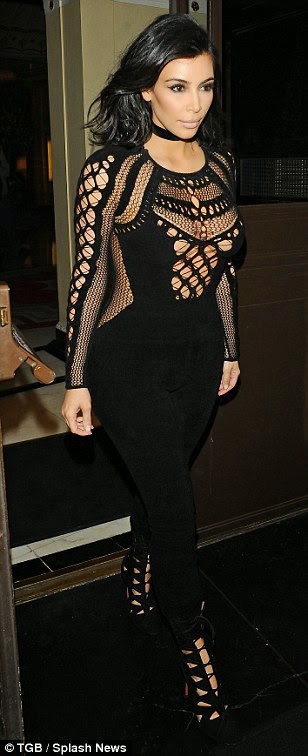The BRIT Awards 2015 went off with a bang the other night, Kanye West scared 80% of viewers - including me, Taylor Swift won her first ever(HOW?) BRIT award & Madonna fell of the stage!! Drama, drama, drama. But besides all that, the red-carpet proved to be one of the best ever.
Celebs never fail to disappoint at these high profile shows and the BRITS is one of the UK's biggest award shows which celebrates(in style) the previous year of British music.
So who was best-dressed?
Rita Ora
Rita definitely knows how to turn heads, her dazzling sequin jumpsuit featuring a flowing train truly 'wow'ed us. 'The Voice' judge isn't afraid to show of her body which she proved by the daring neckline. Minimal jewellery and make-up ensured all eyes were on the gorges dress. 10/10 Rita, you go girl!
Michelle Keegan and Mark Wright
The cutest and most gorgeous couple to grace the red carpet was none other than the beautiful Michelle Keegan and fiance Mark Wright, both British TV stars. Colour co-ordinating paid of for the pair who look every bit of the perfect couple. Michelle paired her LBD with a bright bag adding that bit of fun and pop of colour to her outfit. Michelle, we salute you.
Kim Kardashian-West
Kim K presented an award at the BRITS and introduced hubby Kanye West to the stage. She wore a fitted black jumpsuit which showed of her shapely derriere perfectly. Not only did she present Sam Smith with his global success award she also managed to fit in time (obvs) to take a selfie with presenters Ant & Dec. I must admit I'm not the biggest Kardashian fan but Kim sure did look fab.
Ellie Goulding
Even though Ellie had a (very) awkward encounter on stage whilst presenting an award with Lewis Hamilton it didn't stop her looking drop-dead gorgeous, the white semi-sheer number is complimented by her undone hair and dressed-down jewellery. Simple yet elegant. Rockin' it as per usual.
Taylor Swift
Last but certainly not least, (my fave) the ever-stunning Taylor Swift. The Queen of the red carpet blew us away with her floor length black gown which featured red detailing. Her make-up and hair was kept simple so the main focus was on the absolutely beautiful dress. In my eyes Taylor can do no wrong and this outfit reinforces that. Fantastic.
Did you watch the BRIT awards? What did you think? Who was your best dressed?











